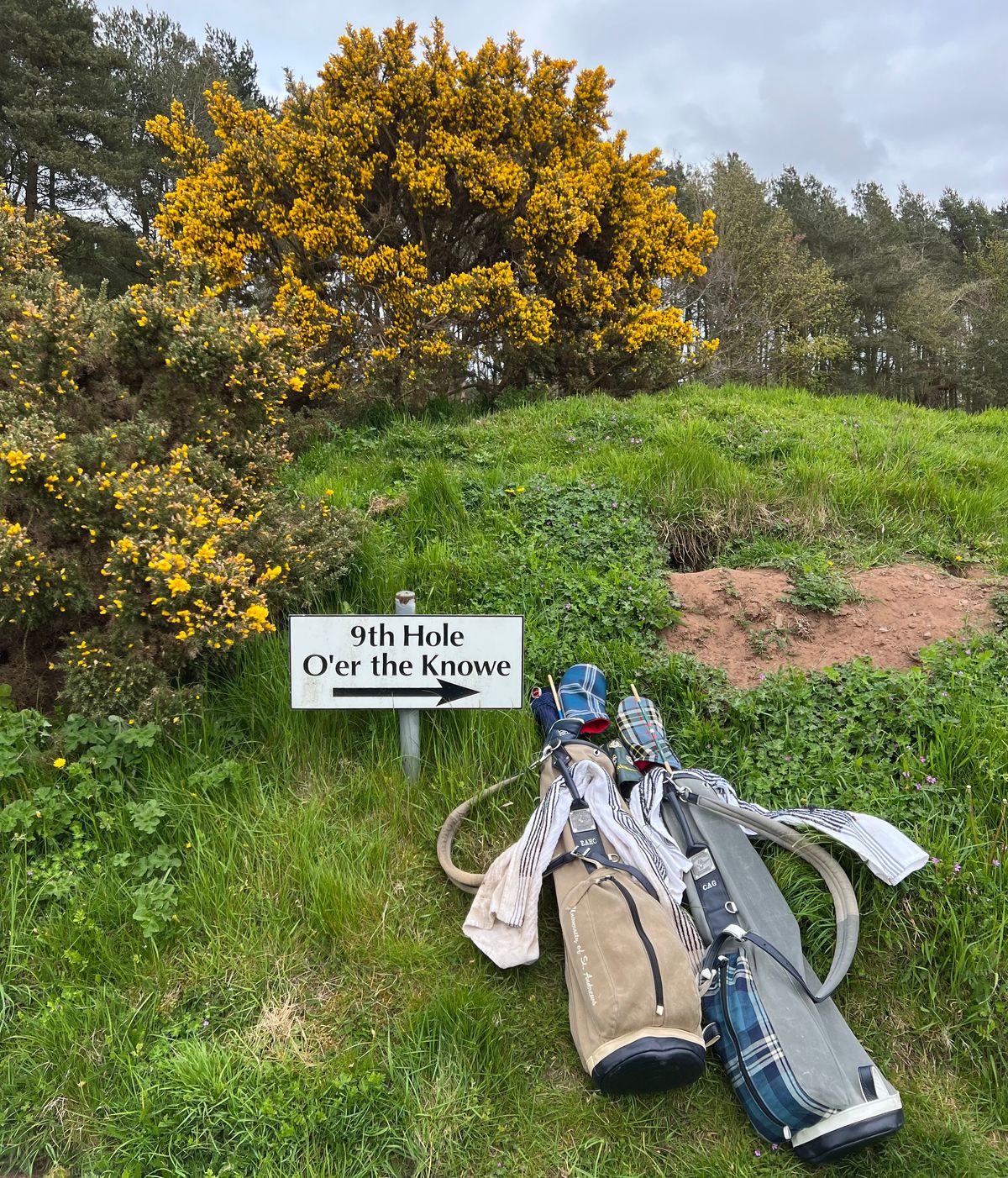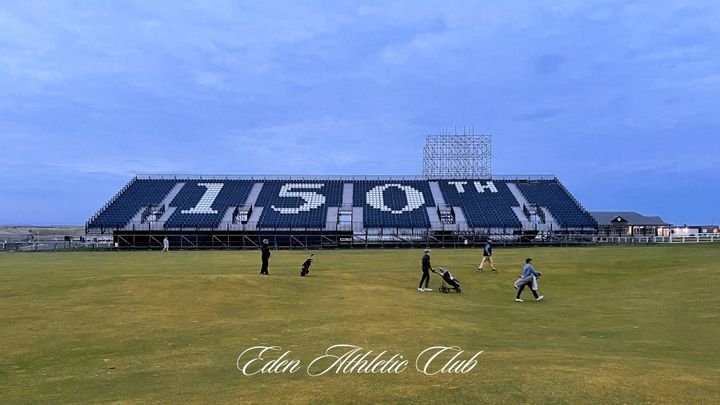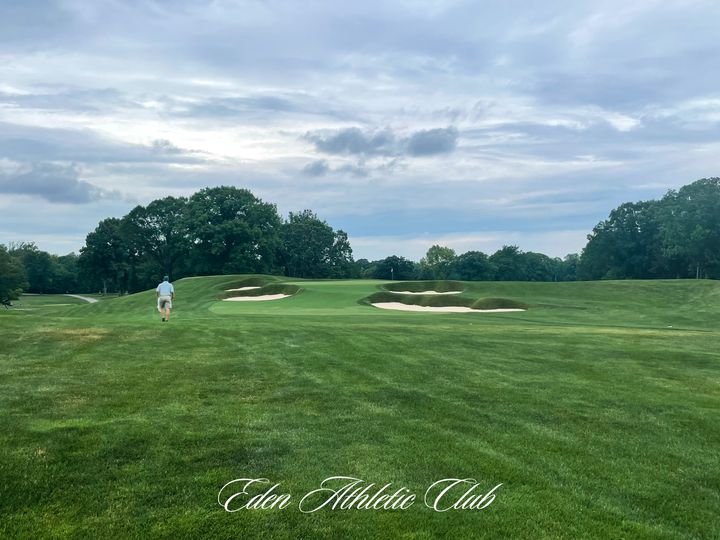Less is More - Vol. 1: The Half Set Approach to a New Track

By Ed Chambler
I have extremely strong opinions on the topic of simplifying golf. It is a game whose inherent complexities and variables amalgamate to approximate something not dissimilar to pure chaos. Yet, for some reason, as golfers, we have a tendency to try complicate things further. We arrive at the first tee with clutter. We bring with us too many extra variables, dead weight, or obstacles, be they physical or mental, often with disastrous results. These things are brought on our own volition and encouraged by the insecure voice of our ego. They can deeply tarnish the experience of the otherwise pleasant and peaceful walk we are about to journey out onto. For our home courses, however, which we are fortunate enough to play on a frequent basis, this might not matter so much. But for our rounds at new and exciting places, even historic and ancient places, whose mystery, and marvel will long surpass all those who make the duteous pilgrimage to their turf, it can be a huge problem. It can even be a heart-breaking one. I think it’s about time this changed.
For those who are unaware, a ‘half set’ typically refers to a golf bag containing 10 clubs or less. But like many things, half sets are a vague concept. Purists might even say a true half set constitutes far less than this, and die-hard fans of the ‘7 iron only’ approach, the valiant soldiers that they are, might object further. More important than what is or isn’t a half set, however, is what a half set has grown to represent. It has become synonymous with a simpler approach to the game, and with it comes an even simpler ethic: take less, enjoy more. This ethic does not solely apply to the number of clubs in the bag, of course. It is far deeper than that.

As sad as the reality is, it is extremely counter intuitive for us to think like this. In our work, in our schooling lives and in many of our career aspirations, we are constantly striving to achieve and take more. It is extremely rewarding to follow such a strategy. At an even more primal level, the chimpanzee with better access to more of the available fruit is the chimpanzee who lives to see another day. In some sense, we are hard wired into this kind of thinking. Don’t get me wrong, I’m not suggesting that there’s anything wrong with this. I’m not telling the chimpanzee to take a more artistic approach to fruit gathering and meditate on a lonesome branch about the fundamental beauty of the banana, and I’m certainly not telling you, dear reader, to throw on all the linen clothing you can find, sell your belongings and fly to a mountain temple in Tibet in pursuit of an anti-capitalist haven of monastic living, gong sounds and Thukpa. I’m merely suggesting that it is against our conditioned nature to consciously choose a lesser resource given the option to take more.
If you’re currently looking at cheap flights on SkyScanner or Googling what ‘Thukpa’ is, then you’re severely missing the point. It is terribly impractical to revolutionise our entire existence in search of totally embodying such an ethic. It simply cannot be done without a sacrificial upheaval across every aspect of one’s life.
However, in certain limited domains, with conscious and committed intent, it can be done quite successfully. I’m sure you can see where I’m going with this. Golf is one of these microcosms in particular that allows for such a pursuit, and playing with a half set achieves it most fully. It teaches the golfer valuable lessons in considered decision making, calm humility and playful creativity. It allows you to relinquish the burning pressure to justify the whole endeavour by playing your best golf at all times. With a lighter bag and a weightless mind, the walk becomes that much more tranquil. Interestingly, the increasing popularity of playing with a half set coincides directly with the meteoric rise of personal mindfulness and meditation practice.
Funnily enough, as with most things in life, we have arrived full circle. Early Scottish players used to carry a small leather quiver of clubs, often not amounting to more than 6, on their walks upon the now hallowed linksland of Fife, East Lothian, and Ayrshire. Early games of golf were played under this custom and many tournaments were won with what would now be considered a half-set. Of course, the game has dramatically evolved since the first Open Championship at Prestwick in 1860. With longer courses rewarding increasing distance off the tee and slick greens requiring meticulous iron play, it has certainly benefitted modern golfers to have the full choice of 14 clubs. But this, again, is missing the point. I would argue that it is equally beneficial for our golf games and for our peace of minds, to intentionally play rounds of golf without the expectation that it has to be perfect. It never is. By taking a half set to the course, you are implicitly committing to this intention. You’re letting go of some of the baggage you once arrived with and replacing it with a more productive system. Ironically, many people play better golf when they play with a half set.
Last Thursday, Charles and I decided to put this to the test. We both often play with half sets, so it wasn’t out of the ordinary, but since I was planning to write about this idea, we decided to play somewhere completely new. Our battlefield for the day was a short drive north from St Andrews, a quaint and bejewelled little course called St Michaels Golf Club in Leuchars. An Old Tom Morris design, St Michaels is a local club with all of the charm you’d expect from a community focussed membership. We drove into the car park adjacent to the understated clubhouse and checked in. We spent a while trying to find where to go or who we needed to talk to. St Michaels has no boisterous pro shop adorned with fresh gear for the despairing among us looking for a quick fix before a round, nor does it have a definitive starter hut tyrannically calling the shots as players nervously pay their fee. Instead, the golfer must find their way to the delightful little bar inside the members lounge where we were greeted by a lovely lady who got us sorted. The handful of members who occupied the worn seats nodded warmly at us as we picked up our scorecards. It was a premonition for the rest of our afternoon.
We retrieved our golf bags from outside the clubhouse and found ourselves bouncing to the first tee with a sense jollity that is exuded at clubs like this. We were ready for the round. Measuring only 5800 yards from the tips, St Michaels is not a long course by any stretch of the imagination. It was perfect for our half-set quivers.

The first 11 holes of the course meander deviously up and around an undulated hillside with little tree coverage. It is an extremely exposed start to a course. As is often the case in Scotland, the wind was blowing a gale that afternoon and it was extremely difficult to keep your ball on its intended line. On the short par 3 second, both Charles and I watched in light-hearted disbelief as our well struck iron shots sailed into the sticky rough on the right of the green. We laughed and trudged our way up the hill to retrieve our lost golf balls. Neither of us were there to break the course record or shoot our personal bests, but to see and experience a new course. We certainly saw a lot of it.


Holes 3, 4, 5 and 6 are some of the most captivating par four’s I’ve played within a 40-mile radius. Each with its nuance and each presenting a different challenge off the tee, they work the golfer out to the southernmost tip of the course and down the left bank of the hill on the 6th fairway. Heavy bunkering and dicey island greens protect what would otherwise be 'gettable' golf holes. Charles and I zig-zagged our way across the holes in a more than unconventional display of ball-striking, but we were still able to enjoy their fascinating intricacies. After all, we were playing with half-sets. We had left our expectations at the door.
The short par 3 seventh takes you down into a punchbowl swale before climbing back up the hill. The 8th plays as magnificently as the cluster of par fours before it, offering the option of a smart and modest iron tee shot, or a hero shot to a raised green. In the spirit of comprehensiveness, though uncorrelated, I took the former approach and Charles the latter. A large bunker on the right side of the fairway caps off the safer tee shot and I used as much room as was possible. The green ahead was cupped on all side by piercingly yellow blooming gorse and the pine trees behind cast an unsettling nervousness as I made my approach shot. From my tee shot I could see Charles rummaging in the gorse for his ball. The gamble had flopped in this case. From the green looking left we were greeted with panoramic views across central Fife. Framed in the distance by the looming Lomond hills, you can make out the nucleus of Cupar across the ploughed fields now starting to flower with crop. We stood there for a while taken aback by the beauty of it all.
The finale of the course is an adventure through the heavily wooded section of the property and marks the start of the absolutely perfect golf architecture that crowns St Michaels as a true diamond in the rough.



The tee box at thirteen nestles itself into the dark corner of the opening the houses the twelfth green, offering the golfer some respite with a fairly open tee shot to a fairway running up a right-hand dog leg. Engulfed by pine trees, the strike of the golf ball from the box echoes with a deafening thunder. You might not realise it, but you are sounding the cannons for the way home.
Old Tom probably gets a bit of a kick every time a player pulls out a driver from their golf bag on the par 5 fourteenth. Invisible from the tee box, a huge valley runs across the middle of the fairway some 290 yards away. It drops off severely on the right-hand side to a treacherously sloped hillside of dense pine trees and bushes. The hole takes an aggressive right turn just after the pit, which means a tee shot from the depths of the swale is blind to a green way out to the players right hand side. It was the first time I'd encountered a par 5 that demands both a lay-up off the tee and a lay-up to the green. It is quite possibly the most interesting golf hole I’ve ever played, and I wouldn't be surprised if Old Tom is chuckling away feeling rather pleased with himself.


The signature hole, so to speak, at St Michaels, is the following par 3, which dives down to a green at least 20 yards below the box. Flighted short irons took our balls safely to the putting surface, carrying the colossal board lined bunker that lies receptive on the right edge. Behind the green are railway tracks along which you play on the way back to the clubhouse. There is a strange sense of relief standing over the tee ball on sixteen that if all else fails, you could always ask the train conductor to give you a ride to the house.

The walk up to the final tee box takes you through the heavy pine-lined forest that we'd been so heartily been avoiding for the last five holes. It spits you out onto a raised tee box above a gently descending fairway that frames the final modest green in front of the clubhouse. We couldn’t help but smile walking down the last as our adventure was coming to an end. A smile of gratitude, if I seem to recall. For, without the half set, we might not have realised what a special course we had stumbled upon.
Playing golf is more than the shots, the score, and the quality of the play. Each is nice and a necessary part of the game, but they are not what brings us out onto the links nor what keeps us there. In some ways, we play golf to adventure. To rekindle some long-lost childhood tolerance that play for plays sake is respectable and justified. When we obsess about handicap, stroke index or swing plane, we slowly lose this jovial sensibility. Moreover, when we obsess over buying all new equipment or using all 14 clubs each and every time, we kill it even faster.
Playing a new course is like venturing out onto a new playground. A new canvas, as it were. But it is only a new canvas once. Such a wondrous opportunity is spoilt if we take it too seriously and play with too much baggage. Sometimes, on rare but welcomed sometimes, I would recommended taking out a wedge or two, and leaving your odd numbered irons at home. Take a half set and go out to enjoy.
Written and shot by Ed Chambler




